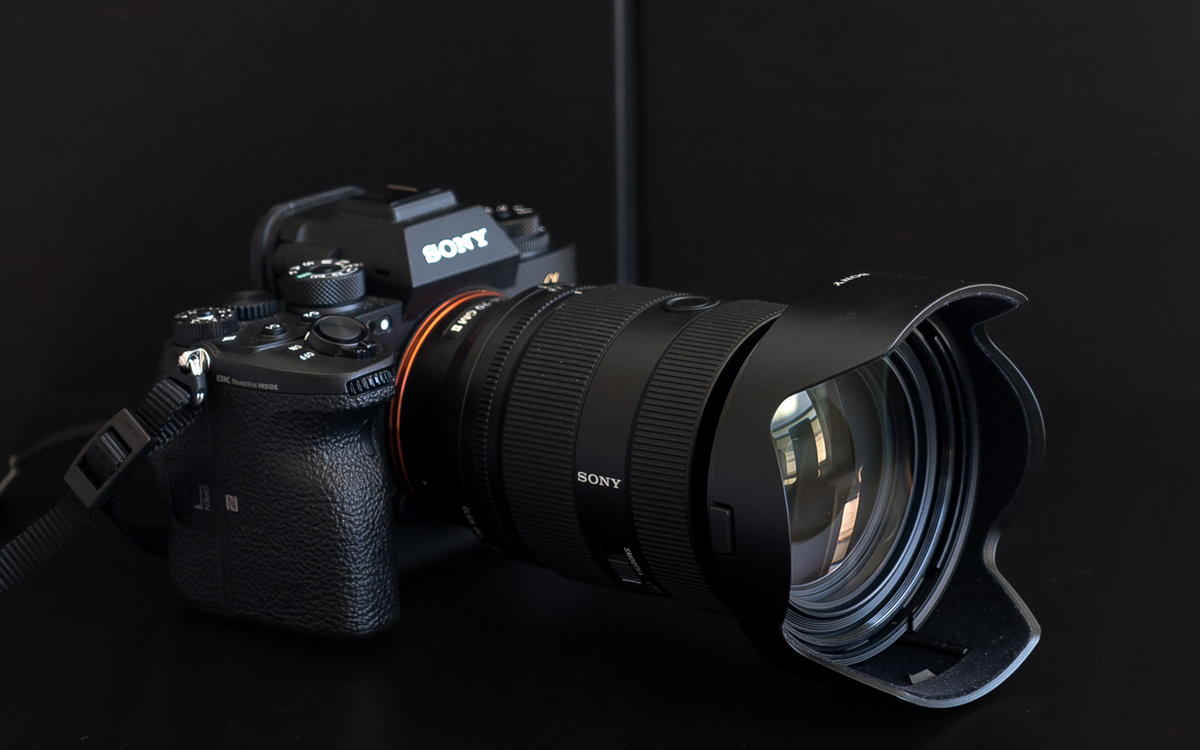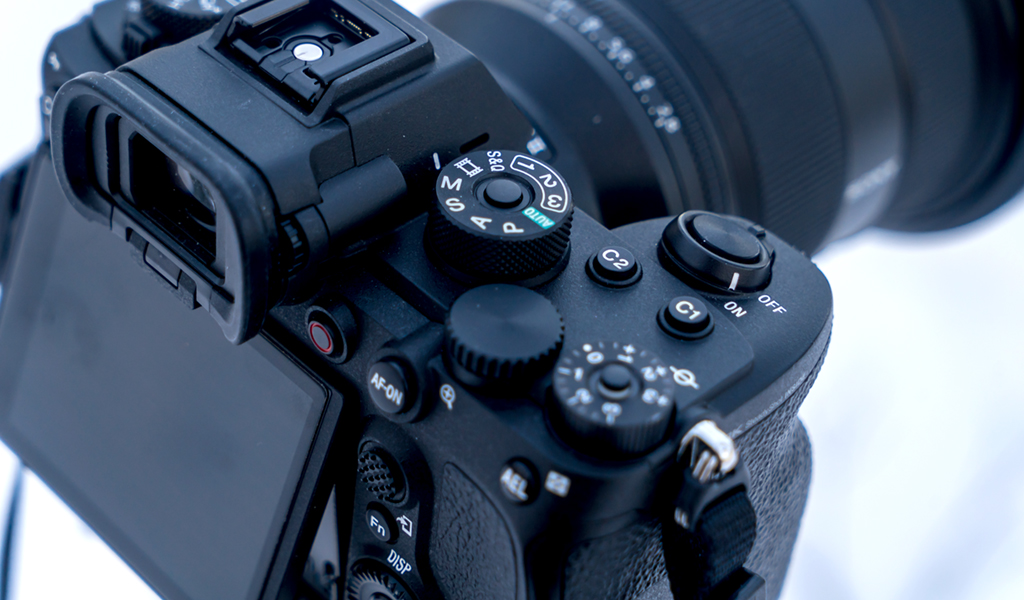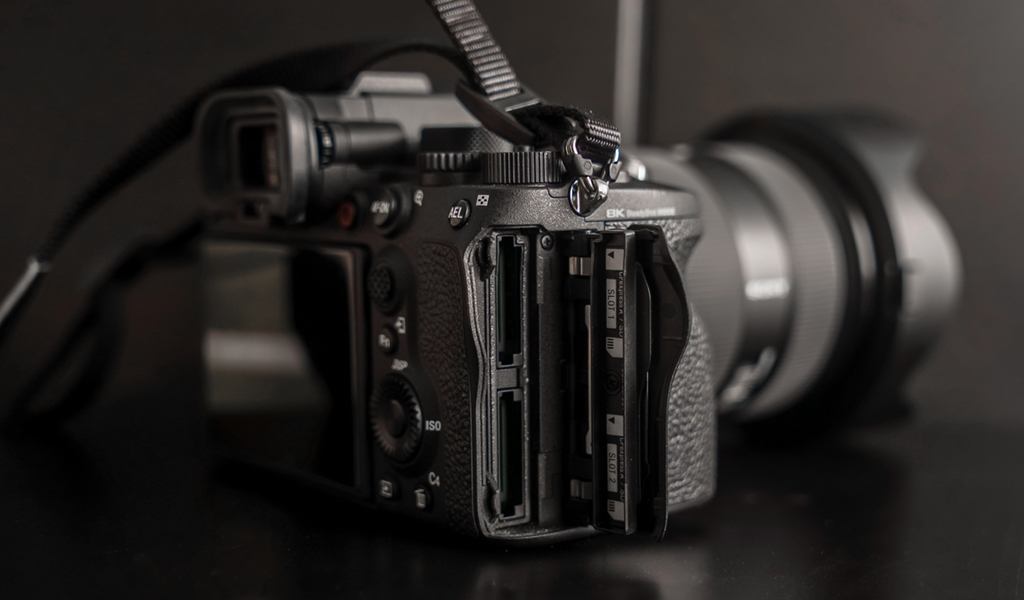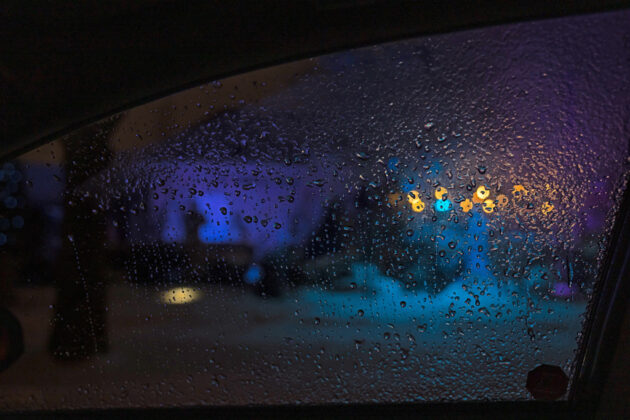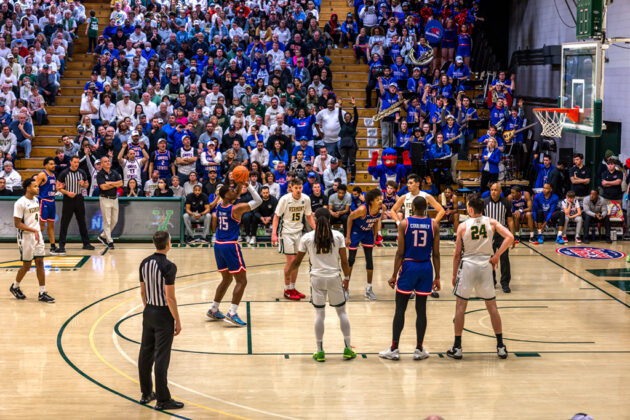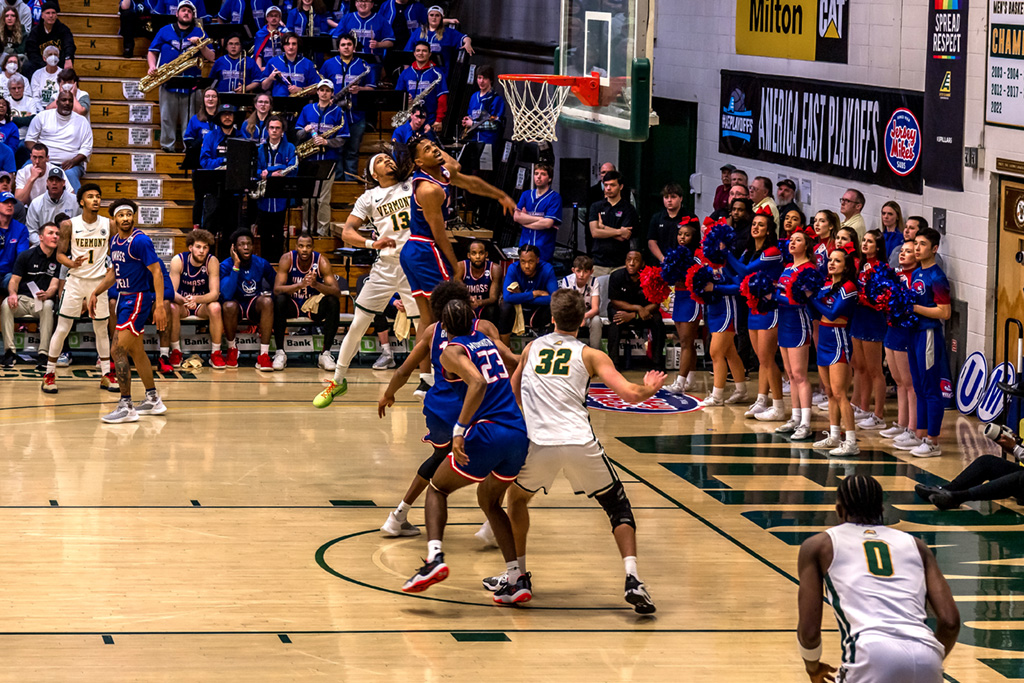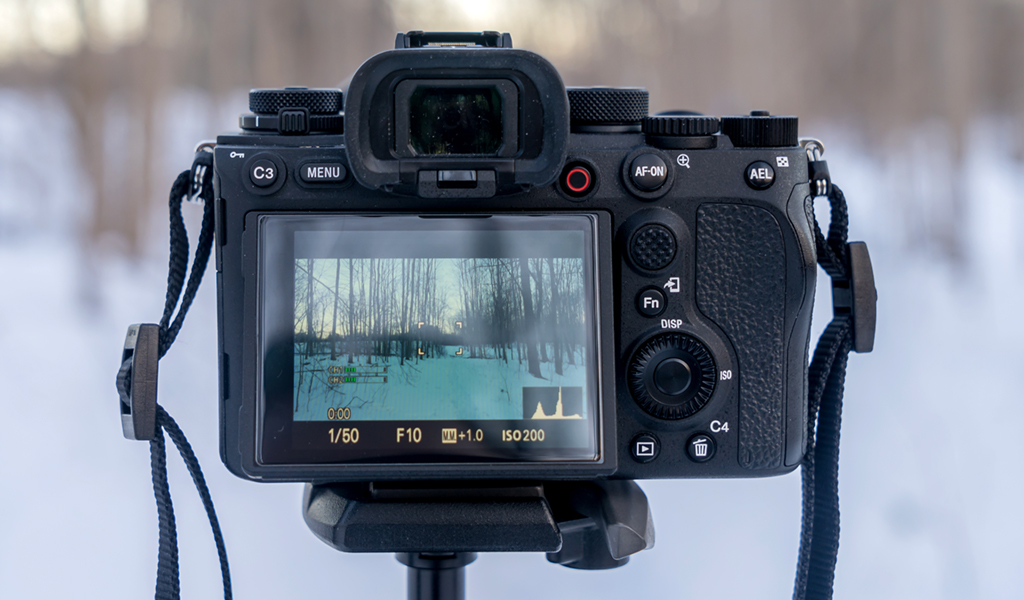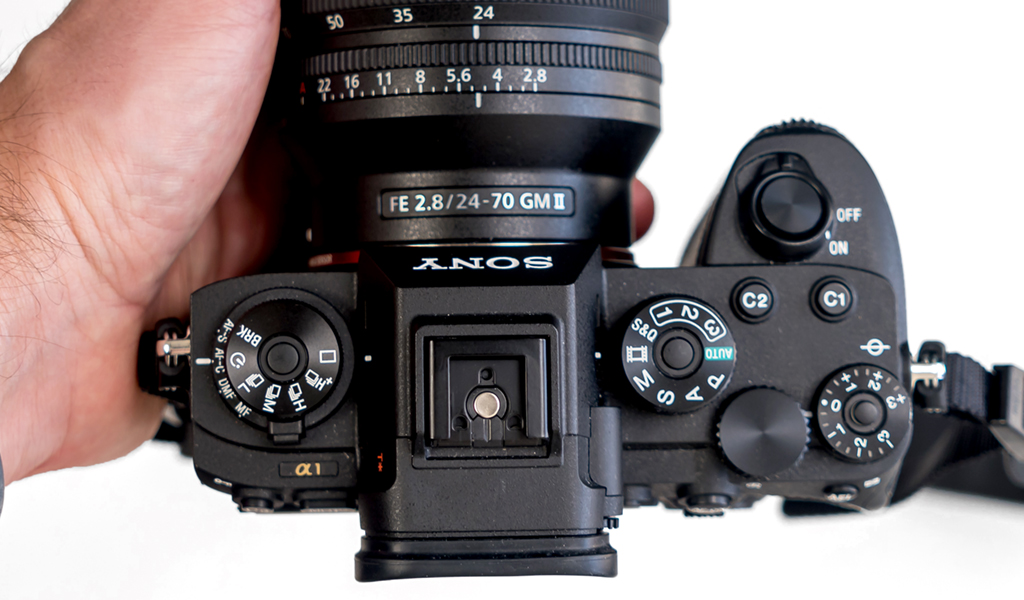You would be hard-pressed to find a mirrorless camera that outperforms the Sony Alpha 1 simply because of how versatile it proves to be. It’s rare for me to gush over any product after testing it but the Alpha 1 felt like a masterpiece. So much so, that it also made me rethink how I approach different shooting conditions with my other cameras.
If the mark of a transcendent camera is one that teaches as it produces outstanding images in varying situations, the Alpha 1 is easy to describe in those terms. Sony released it back in 2021, yet it shoots today like it just came out, almost as if the company’s engineers took features and pieces from other cameras and pieced them together into this model.
It’s not a camera you pick up when you’re not serious about photography—something already clear from what it costs. Pro photographers and serious amateurs will love the flexibility on offer here, including for video, regardless of what, who or where the subject is.
What stands out about the Alpha 1
Coming from a Sony A7 III, the Alpha 1 felt familiar to hold, though it is bigger and heavier by comparison. I got to test it with Sony’s 24-70mm G Master II F2.8 lens, which is superb in so many respects unto itself. The combination between the Alpha 1 body and the GM II lens felt like nothing was too difficult to shoot.
The lens’ prowess is one thing, but the Alpha 1 does much of the work, and since the camera sells body-only, it’s important to put its own features into focus. The 50-megapixel full-frame Exmor R BSI CMOS sensor is powered by dual Bionz XR image processors, bridging together quality and speed. Not only can you capture incredibly vivid and sharp images, but you can also track people or objects and get them in focus too.
The autofocus is ridiculously fast, latching onto a subject in what felt like a microsecond. Case in point, it calculates autofocus and exposure 120 times per second, which is what enables it to track a subject, stay in focus and capture a clear shot so consistently. I was shocked at how fast and easy it was to take action shots, making it clear to me this fits right in for sports photography.
Sony’s outstanding face and eye detection also come into play with the ability to see those details even from a fair distance. It’s sometimes too good in that it will lock onto another subject’s face or eyes at the last moment, as I noticed when taking shots at sporting events. But it’s a minor gripe in the grander scheme because the quality looks so pristine.
The rest of the body
The dials and buttons will feel familiar to Sony shooters because they’re laid out in similar ways. There’s a drive mode dial on the left that’s convenient when you want to shoot in burst or bracketing. The others for shooting mode, exposure compensation and for shutter speed and aperture (depending on the lens) are where they should be. The joystick, directional pad and various functional buttons also do their thing.
While I liked the 3-inch touchscreen, I just wish it did more than tilt. An articulating screen is handy for shooting from tighter angles where it’s hard to see the screen otherwise. Even for video, I see real value in having it, not just for selfie videos, but for content that fosters creativity. The tilting screen is a challenge I’m all too familiar with from the A7 III, so it felt like a letdown to see that I would be forced to compromise the same way with a camera this superior.
The Alpha 1 has no shortage of ports and connections. How often do you see a full Ethernet port on a mirrorless camera? It’s there, along with USB-C at Gigabit speeds for transferring photos on the fly (the port is also how the camera charges the battery). That’s on top of the ports for flash sync, plus 3.5mm jacks for microphones and headphones.
On the other side lies the dual-card slot that can take either CFExpress or UHS-II SD cards. If you’re all about speed and want the fastest bursts, you’re better off going with CFExpress.
The Multi Interface hot shoe works with select Sony accessories, like certain microphones or flashes, to facilitate a tighter connection. It’s also a way to cut the cord and avoid using ports for a cleaner setup.
A different menu system
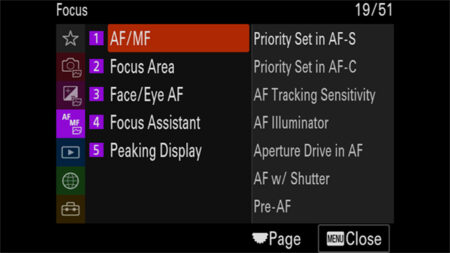 I’ve never liked Sony’s menu system for its Alpha cameras, finding it cumbersome and clunky in both layout and execution. The Alpha 1 features a different look with an attempt toward streamlining things, and though better, I can’t say I’m overly impressed. It’s still hard to find certain features, while others feel buried under pages of options.
I’ve never liked Sony’s menu system for its Alpha cameras, finding it cumbersome and clunky in both layout and execution. The Alpha 1 features a different look with an attempt toward streamlining things, and though better, I can’t say I’m overly impressed. It’s still hard to find certain features, while others feel buried under pages of options.
The Fn button acts as a shortcut to the main settings you would probably want to change on the fly, like drive mode, focus area, focus mode, ISO metering, white balance and primary memory card slot. Even if you’re familiar with Sony’s cameras, it’s worth spending time to familiarize yourself with where everything is—and what the camera can do.
Autofocus on the Alpha 1
Autofocus (AF) points cover 92% of the rear touchscreen. I already mentioned the face/eye/animal/object detection. Put them together and you’re more than likely to hit your target. The combination certainly worked for me, not just for precision and speed, but also for the simplicity involved. I could move the focal point faster and immediately lock on to a subject with regularity. It might not seem like much, but saving those seconds adds up and simply brings out greater efficiency when shooting.
That goes for shooting anything. It didn’t matter what the subject was, or even the time of day or night. The Alpha 1 (with the GM II lens) could handle it all, partly because the low-light sensitivity is better than something like the A7 IV, for example. Wildlife photographers will appreciate the bird-eye tracking, as well as the general animal tracking.
Unfortunately, I wasn’t successful finding anything too interesting to capture in the brief time I spent in the wilderness, so can’t speak to exactly how great it can be. Given my experience with the A7 III, though, I imagine it would be superb. All of this applies just as much to video, where the Alpha 1 proves itself more than worthy of being a serious option for those interested in creating or producing video content.
Photo quality
The beauty here comes in the dynamic range, which is broader and more flexible than other Sony cameras. By that, I mean you can shoot with different combinations in mind. Higher ISOs don’t come with a flood of noise, while lowering the exposure to retain detail in bright highlights doesn’t come at the expense of details in the shadows. This is most evident in RAW images, but you could also see it in how Sony processes JPEGs in the camera.
I worked on a lot of images in post-production, editing them in Adobe Lightroom to start. The sheer level of detail inherent in the images was almost staggering. What looked too dark on the camera’s own screen turned out to be an excellent shot after a little work to bring out the light and color.
Moreover, this worked both ways. If it was a darker scene, I could bring out detail in the highlights without adversely affecting the shadows. If it was a brighter scene, I could do the same with shadows. People, places, things—it didn’t really matter. Portraits or action didn’t matter, either. To say one feels invincible capturing any subject with this camera isn’t an exaggeration. Much like it would work in a professional setting, like event photography, there’s nothing stopping you from getting a little gritty with street photography too.
Shooting in burst was easy, regardless of whether it was the electronic or mechanical shutter. Sports and action shooters would be hard-pressed to find something else this fast and accurate all at once. Unfortunately, I didn’t have a CFExpress card in time to test out the fastest speeds, but felt perfectly at ease when trying it with the fast UHS-II SD card I slotted in.
Shooting videos
You could argue Sony didn’t focus as much on video with the Alpha 1 relative to other cameras. That doesn’t make it any less capable, as it’s got a lot of the goods to shoot fantastic quality footage. It seems to borrow from the A7S III, a camera I haven’t tested before, but one that Sony targeted toward videographers. The Alpha 1 expands on that with more options to shoot with.
One thing to note is that 4K video is pixel binned, so it is merging pixels together for better low-light performance. If you want to retain some extra detail, Sony suggests shooting in 8K and down-sampling to 4K from there as a workaround. I never tried it, so can’t tell you exactly how much better footage will look because of it.
SteadyShot image stabilization is excellent at helping with a steady hand, and I didn’t notice rolling shutter creeping in when moving to follow a scene or subject. While I focused more on still photography, I felt the Alpha 1 proved itself effective for high-quality video.
Battery life
Battery life is a little hard to read on the camera. On average, Sony rates it at about 400 still images per charge. That’s assuming you’re not shooting in burst or avoiding video. Burst shooting will massively increase the number of shots per charge, so don’t be surprised if you end up with many more while out shooting that way. Shoot 8K video for an extended period and that will also change the metrics.
I never field tested it to gauge for overheating but I would imagine you would have to take into account where you’re shooting as well. Try to shoot in 8K or 4K for long stretches in the hot sun, and you’re probably going to tax the battery more than if you were to try doing that in the dead of winter.
Final thoughts on the Sony Alpha 1
The Alpha 1 isn’t for the casual photographer who looks to the camera only when an event or vacation comes up. To me, this camera is about the art of photography, where it can not only help serious amateurs hit new plateaus, but also enable professionals to do even more. Its price tag already makes it a difficult decision, but it is, in many ways, a case of getting what you pay for.
That said, you can do just fine with a different camera if you feel this isn’t for you. There are plenty of good options to choose from, and if you’re sticking with Sony, the same lenses for its full-frame E-mount lineup would work with the Alpha 1 anyway.
The Sony Alpha 1 is available now in body-only. Check out all the other Sony cameras and photography gear available.

